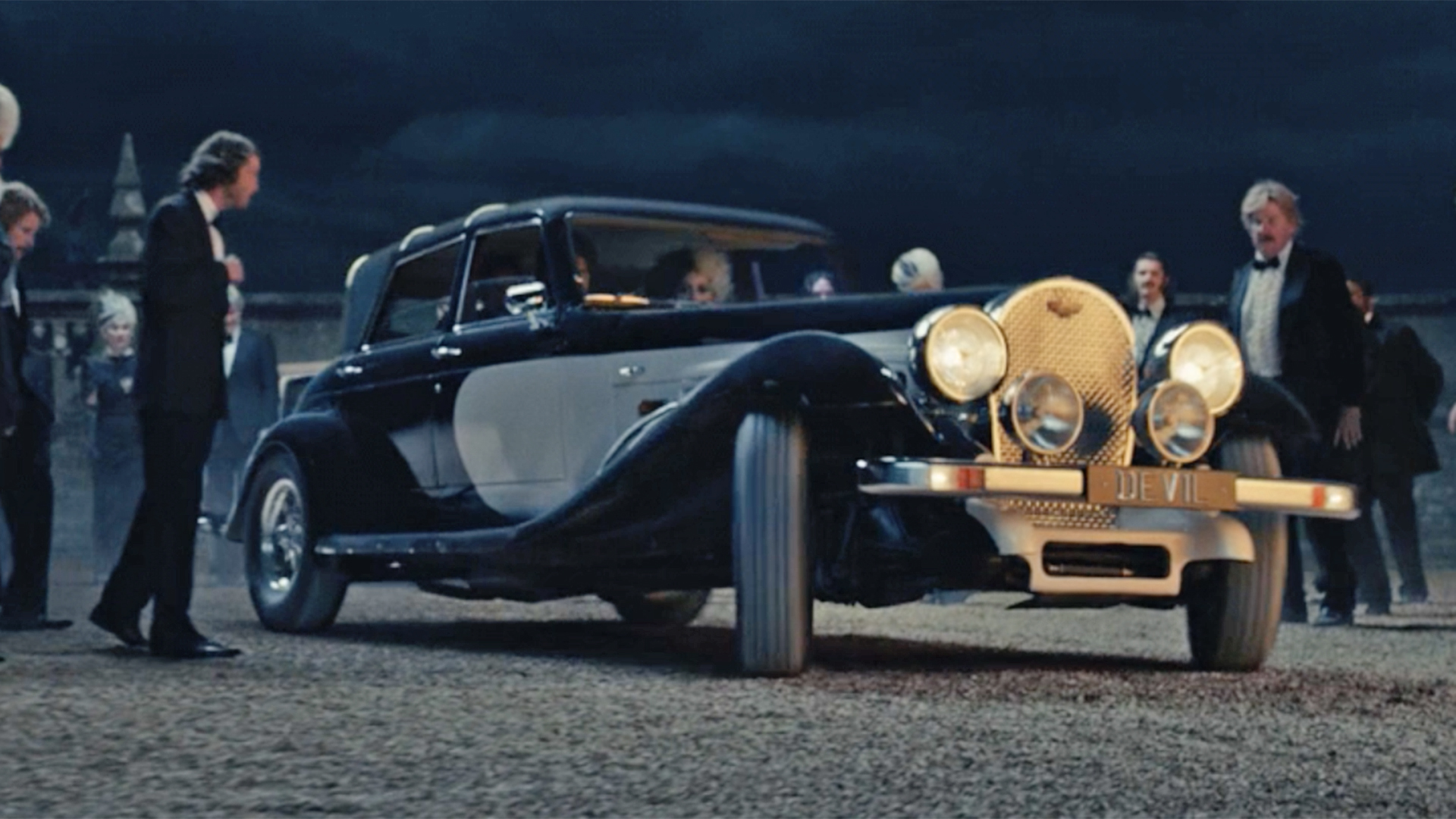

Disney’s Cruella has been in theaters for two weeks, and probably left you wondering as to the provenance of the lead character’s stylish namesake automobile. That vehicle is none other than a Panther De Ville, produced by the Panther Westwinds company in the distant past of the mid-1970s. It was sold to the production by one Peter Mayo from Mansfield, England, who has been kind enough to share the history of the car with the BBC.
The car used in the 2021 film was a De Ville that Mayo had bought in pieces, intending to restore. Disney took the car in bits, reassembling it for the film. Unlike the earlier films, the Cruella protagonist played by Emma Stone drives a four-door De Ville, black with a white stripe on the flanks. It’s a notable distinction from the earlier films, in which Glen Close’s character drove a two-door De Ville in white with black flanks. Given the new film is a prequel, it’s within reason that the Cruella’s tastes might have changed over the years.

As for the company that built the DeVille, Panther Westwinds was founded in the 1972 by Robert Jankel, manufacturing cars based on standard production underpinnings but sporting throwback styling to the pre-war period. The De Ville was the company’s second model, following on from the success of the earlier J72 roadster. Each De Ville was hand built, with a total of only 60 made over a stop-start production run from 1974 to 1985. The styling of the De Ville was inspired by the Bugatti Royale, also known as the Type 41—sporting a small passenger cabin at the end of an extraordinarily long hood.


The car was available in a variety of body styles, both two-door and four-door, with a convertible also available. A six-door limousine model was also built as a one-off. It sported either a straight-six or V12 Jaguar engine under the hood, with the latter engine producing anywhere from 242 to 295 horsepower. Weighing around two tons depending on the exact model, performance was spritely enough given the car’s purpose as a luxury cruiser.
The car intended to appeal to the very wealthiest of customers, with Sir Elton John being one of the car’s most notable owners. Each car was customized to the owner’s personal tastes, with features like TV sets and rear-seat bars common. At the time, it was Britain’s most expensive new car on sale. Speaking to Chad, owner Peter Mayo notes that “When it was new it was also one of the most expensive cars in the world. In 1974, when they first came out, it would have cost £18,000, when you could get a Jaguar for £3,000. You could buy two Rolls Royce Silver Shadows for the same price!”

Mayo doesn’t quote an exact price that Disney paid for his car, though states it went for “nearing six figures.” As a guide, a four-door example was listed on RM Sotheby’s in 2013 for $65,000 to $75,000. While the car was once the most expensive new car in Britain, the Panther Westwinds name has failed to hold much sway in the intervening decades, keeping used prices in check.

The end of the Panther Westwinds story is a bleak one, with the company being bought out at the brink of collapse in 1980, before limping along for another decade or so and petering out in the early 1990s. They never lacked for interesting models, however. The dying automaker went down fighting after releasing the rear-mid-engined, all-wheel-drive Panther Solo, while updating the retro roadster offering with the Panther Kallista.
The idea of a 1970s up-and-coming fashion icon getting about in an ostentatious faux-retro luxury car is perfectly fitting, and only moreso given the continuity of the film trilogy. It’s a great bit of car casting that serves the film well while flowing neatly into the sequels. With any luck, the star car will end up on display at a Disney location somewhere in future. Famous movie cars always tend to make a splash, even years on; there’s still huge fan interest in cars like Dom’s Charger and the Bullitt Mustang, after all.
Got a tip? Let us know: tips@thedrive.com